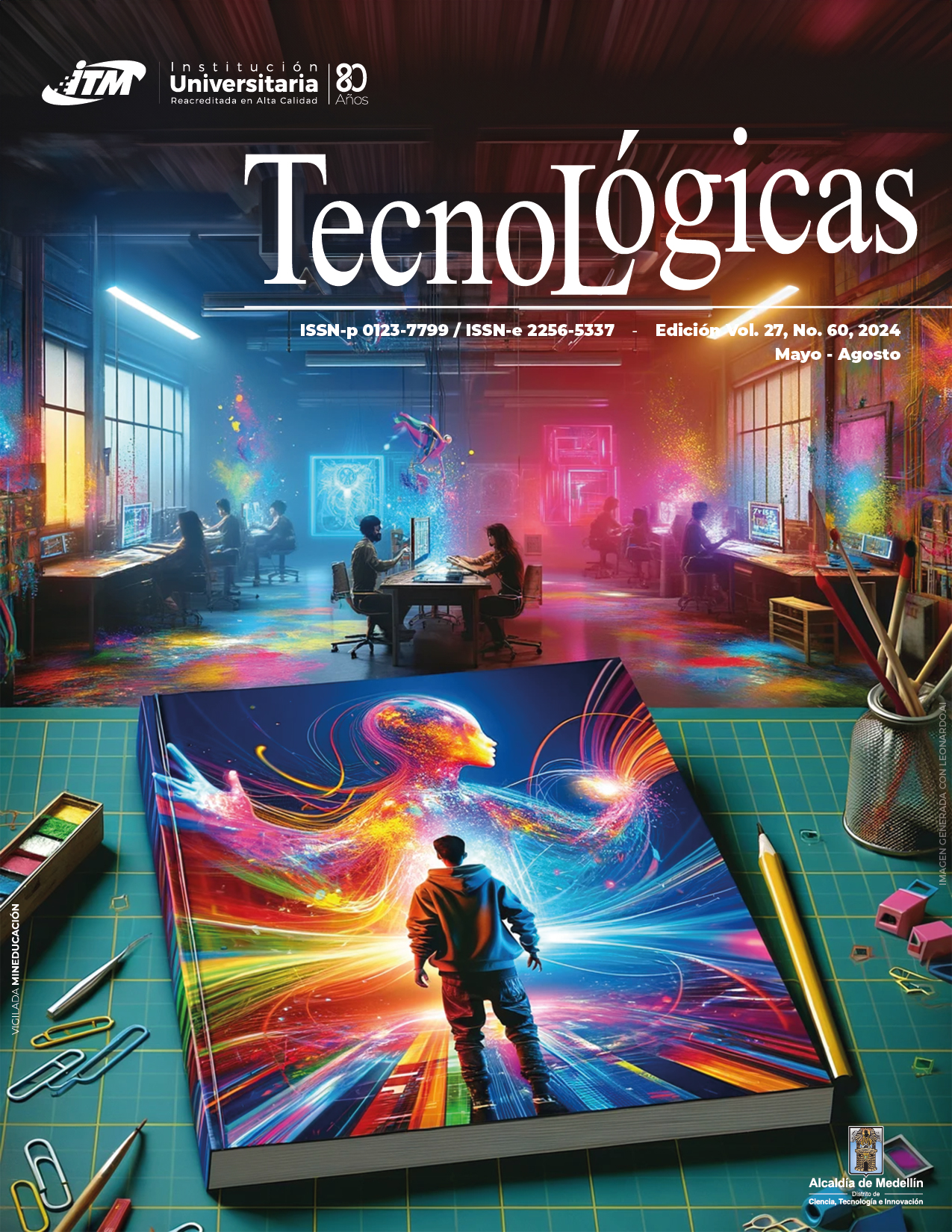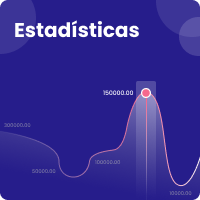Desafíos en la Interacción Humano-Computador desde una mirada retrospectiva: una reflexión global con énfasis en Latinoamérica
Resumen
Es indudable que el diseño y la construcción de herramientas para apoyar la realización de tareas marcó un punto de inflexión en nuestro desarrollo como especie y sociedad. Incluso algunos argumentan que es este punto el que define nuestra transición a seres inteligentes. Una de las consecuencias más relevantes es que pudimos comprender nuestra capacidad de cambiar y modificar el entorno para nuestro beneficio y comodidad. Sin embargo, fue necesario que pasaran varios miles de años, con la llegada de la era informática y de la computación, para que sintiéramos la necesidad de reflexionar sobre cómo interactuamos y nos relacionamos con una herramienta en particular, aquella que ha permitido grandes transformaciones en nuestro entorno. Fue esa necesidad la que convirtió la relación humano-computador en un objeto de interés, estudio e investigación [1], [2].
Referencias bibliográficas
B. A. Myers, “A brief history of human-computer interaction technology,” Interactions, vol. 5, no. 2, pp. 44–54, Mar. 1998. https://doi.org/10.1145/274430.274436
E. R. Petrick, “A Historiography of Human–Computer Interaction,” IEEE Annals of the History of Computing, vol. 42, no. 4, pp. 8-23, 1 Oct.-Dec. 2020. https://doi.org/10.1109/MAHC.2020.3009080
A. Khanna, and S. Kaur, “Internet of Things (IoT), Applications and Challenges: A Comprehensive Review,” Wirel. Pers. Commun., vol. 114, no. 2, pp. 1687–1762, Sep. 2020. https://doi.org/10.1007/s11277-020-07446-4
E. Baccour et al., “Pervasive AI for IoT Applications: A Survey on Resource-Efficient Distributed Artificial Intelligence,” IEEE Commun. Surv. Tutorials, vol. 24, no. 4, pp. 2366-2418, Aug. 2022. https://doi.org/10.1109/COMST.2022.3200740
I. Alam, S. Khusro, and M. Naeem, “A review of smart TV: Past, present, and future,” in 2017 International Conference on Open Source Systems & Technologies (ICOSST), Lahore, Pakistan, 2017, pp. 35-41. https://doi.org/10.1109/ICOSST.2017.8279002
G. Meixner et al., “Retrospective and Future Automotive Infotainment Systems—100 Years of User Interface Evolution,” in Human-Computer Interaction Series, G. Meixner, C. Müller, Eds., Cham: Springer International Publishing, 2017, pp. 3–53. https://doi.org/10.1007/978-3-319-49448-7_1
Z. Tan et al., “Human–Machine Interaction in Intelligent and Connected Vehicles: A Review of Status Quo, Issues, and Opportunities,” IEEE Trans. Intell. Transp. Syst., vol. 23, no. 9, pp. 13954–13975, Sep. 2022. https://doi.org/10.1109/TITS.2021.3127217
P. R. I. Gomes, M. S. de Castro, and T. H. Nascimento, “Gesture recognition methods using sensors integrated into smartwatches: Results of a systematic literature review,” in Proceedings of the XXII Brazilian Symposium on Human Factors in Computing Systems, Maceió, Brazil, 2023, pp. 1–11. https://doi.org/10.1145/3638067.3638082
J. D. Bustamante-Gonzales, H. E. Chumpitaz-Caycho, and F. Cordova-Buiza, “Home automation system and quality of life in low-income households: A systematic review of the literature from 2010 to 2021,” in Lecture Notes in Networks and Systems, X. S. Yang, S. Sherratt, N. Dey, and A. Joshi, Eds., Singapore: Springer Nature Singapore, 2023, pp. 423–430. https://doi.org/10.1007/978-981-19-1607-6_37
A. Berenguer, J. Goncalves, S. Hosio, D. Ferreira, T. Anagnostopoulos, and V. Kostakos, “Are Smartphones Ubiquitous?: An in-depth survey of smartphone adoption by seniors,” IEEE Consum. Electron. Mag., vol. 6, no. 1, pp. 104–110, Dec. 2016. https://doi.org/10.1109/MCE.2016.2614524
R. Fuller, “Human-computer-human interaction: how computers affect interpersonal communication,” in Computers, Communication and Mental Models, Florida: CRC Press, 2020, pp. 11–14. https://www.taylorfrancis.com/chapters/edit/10.1201/9781003072171-2/human-computer-human-interaction-computers-affect-interpersonal-communication-rodney-fuller
O. Keng-Boon et al., “The Potential of Generative Artificial Intelligence Across Disciplines: Perspectives and Future Directions,” J. Comput. Inf. Syst., pp. 1–32, Oct. 2023. https://doi.org/10.1080/08874417.2023.2261010
S. S. Nair, “Redefining Creativity in Design: Exploring the Impact of AI-Generated Imagery on Design Professionals and Amateurs,” in 2024 11th International Conference on Computing for Sustainable Global Development (INDIACom), New Delhi, India, 2024, pp. 1723-1728. https://doi.org/10.23919/INDIACom61295.2024.10498341
J. Delle Ville, D. Torres, A. Fernández, and L. Antonelli, “An approach to cluster scenarios according to their similarity using natural language processing,” in Communications in Computer and Information Science, P. H. Ruíz, V. Agredo-Delgado, and A. Mon, Eds., Cham: Springer Nature Switzerland, 2024, pp. 50–62. https://doi.org/10.1007/978-3-031-57982-0_5
M. Bolaños, C. Guzmán, C. A. Collazos, and F. L. Gutiérrez, “Computational playful strategy to measure the level of technological acceptance by older adults,” in Communications in Computer and Information Science, P. H. Ruíz, V. Agredo-Delgado, and A. Mon, Eds., Cham: Springer Nature Switzerland, 2024, pp. 109–120. https://doi.org/10.1007/978-3-031-57982-0_9
J. Morales, F. Silva-Aravena, Y. Valdés, and S. Baltierra, “Virtual reality and augmented reality applied to E-commerce: A literature review,” in Communications in Computer and Information Science, V. Agredo-Delgado, P. H. Ruíz, and O. Correa-Madrigal, Eds., Cham: Springer International Publishing, 2022, pp. 201–213. https://doi.org/10.1007/978-3-031-24709-5_15
J. F. F. Marulanda, C. A. Collazos, and J. A. Hurtado, “Social presence and user experience: The influence of the immersive virtual classroom in synchronous distance learning,” in Communications in Computer and Information Science, P. H. Ruíz, V. Agredo-Delgado, and A. Mon, Eds., Cham: Springer Nature Switzerland, 2024, pp. 286–300. https://doi.org/10.1007/978-3-031-57982-0_22
F. C. Beltrán, A. Aponte, and W. J. Sarmiento, “Mixed reality infotainment simulator, work in progress,” in Communications in Computer and Information Science, V. Agredo-Delgado, P. H. Ruíz, and O. K. Villalba-Condori, Eds., Cham: Springer International Publishing, 2020, pp. 155–159. https://doi.org/10.1007/978-3-030-66919-5_16
C. H. Espino-Salinas et al., “Driver identification using machine learning and motor activity as data source,” in Communications in Computer and Information Science, V. Agredo-Delgado, P. H. Ruíz, and O. Correa-Madrigal, Eds., Cham: Springer International Publishing, 2022, pp. 88–100. https://doi.org/10.1007/978-3-031-24709-5_7
M. I. O. de la Torre, H. Luna-García, J. M. Celaya-Padilla, H. Gamboa-Rosales, W. J. Sarmiento, and C. A. Collazos, “Autonomous driving: Obtaining direction commands by classifying images within a simulation platform,” in Communications in Computer and Information Science, V. Agredo-Delgado, P. H. Ruíz, and O. K. Villalba-Condori, Eds., Cham: Springer International Publishing, 2020, pp. 30–41. https://doi.org/10.1007/978-3-030-66919-5_4
J. F. Fernández Joya, G. Á. Buitrago, H. Luna-García, and W. J. Samiento, “Smartphones, suitable tool for driver behavior recognition. A systematic review,” in Communications in Computer and Information Science, V. Agredo-Delgado, P. H. Ruíz, and O. K. Villalba-Condori, Eds., Cham: Springer International Publishing, 2020, pp. 233–242. https://doi.org/10.1007/978-3-030-66919-5_24
J. S. Guzmán, A. F. Agudelo, I. Toledo, D. Bambague, H. Luna-García, and C. A. Collazos, “Evaluation and redesign proposal of an infotainment system: A case study with a parked vehicle,” in Communications in Computer and Information Science, V. Agredo-Delgado, P. H. Ruíz, and O. Correa-Madrigal, Eds., Cham: Springer International Publishing, 2022, pp. 101–113. https://doi.org/10.1007/978-3-031-24709-5_8
A. Rozo-Torres, and W. J. Sarmiento, “Prompt engineering, an alternative for video game development?,” in Communications in Computer and Information Science, P. H. Ruíz, V. Agredo-Delgado, and A. Mon, Eds., Cham: Springer Nature Switzerland, 2024, pp. 242–256. https://doi.org/10.1007/978-3-031-57982-0_19
A. F. Solis Pino, P. H. Ruiz, V. Agredo-Delgado, A. Mon, and C. A. Collazos, “Human-computer interaction research in Ibero-America: A bibliometric analysis,” in Communications in Computer and Information Science, P. H. Ruíz, V. Agredo-Delgado, and A. Mon, Eds., Cham: Springer Nature Switzerland, 2024, pp. 185–199. https://doi.org/10.1007/978-3-031-57982-0_15
T. Granollers, J. Muñoz-Arteaga, C. A. Collazos, and H. Luna-García, “A year of HCI webinars in Latin America,” Interactions, vol. 27, no. 6, pp. 63–65, Nov. 2020. https://doi.org/10.1145/3424684
C. A. Collazos, W. J. Sarmiento, A. Solano, and Y. A. Méndez, “Interacción Humano-Computador en la Sociedad Colombiana de Computación,” Rev. Colomb. Comput., vol. 21, no. 2, pp. 102–104, Dec. 2020. https://doi.org/10.29375/25392115.4040
G. Lopez et al., “Todo Cambia: Desafios y Oportunidades en HCI en LATAM,” in Proceedings of the XI Latin American Conference on Human Computer Interaction, New York, NY, USA, 2023, pp. 1-3. https://doi.org/10.1145/3630970.3631076
C. Sturm et al., “Student design competitions as an awareness-building activity for HCI in the global south,” in Extended Abstracts of the CHI Conference on Human Factors in Computing Systems, New York, NY, USA, 2024, pp. 1-7. https://doi.org/10.1145/3613905.3637105
C. J. Latorre-Rojas, A. Rozo-Torres, L. Cortés-Rico, and W. J. Sarmiento, “Heart-In-Hand, swapping point of view for immersive navigation in medical cardiology,” in 2022 IEEE Conference on Virtual Reality and 3D User Interfaces Abstracts and Workshops (VRW), Christchurch, New Zealand, 2022, pp. 908-909. https://doi.org/10.1109/VRW55335.2022.00305
A. De la Cruz Villarreal, G. N. Alavéz Santiago, Á. Martínez, E. L. Baltazar Hernández, J. C. López Pérez, and M. del R. Peralta Calvo, “SAM: Interface design of a mobile application for women in risk situations,” in Extended Abstracts of the 2023 CHI Conference on Human Factors in Computing Systems, New York, NY, USA, 2023, pp. 1-6. https://doi.org/10.1145/3544549.3583844
N. Jiménez Barriga, and B. Hernández Villalba, “ROBOTE: Interactive educational tool to teach basic education children to classify and collect waste in their school environment,” in Extended Abstracts of the 2023 CHI Conference on Human Factors in Computing Systems, New York, NY, USA, 2023, pp. 1-8. https://doi.org/10.1145/3544549.3583847
Descargas
Derechos de autor 2024 TecnoLógicas

Esta obra está bajo una licencia internacional Creative Commons Atribución-NoComercial-CompartirIgual 4.0.

| Estadísticas de artículo | |
|---|---|
| Vistas de resúmenes | |
| Vistas de PDF | |
| Descargas de PDF | |
| Vistas de HTML | |
| Otras vistas | |








